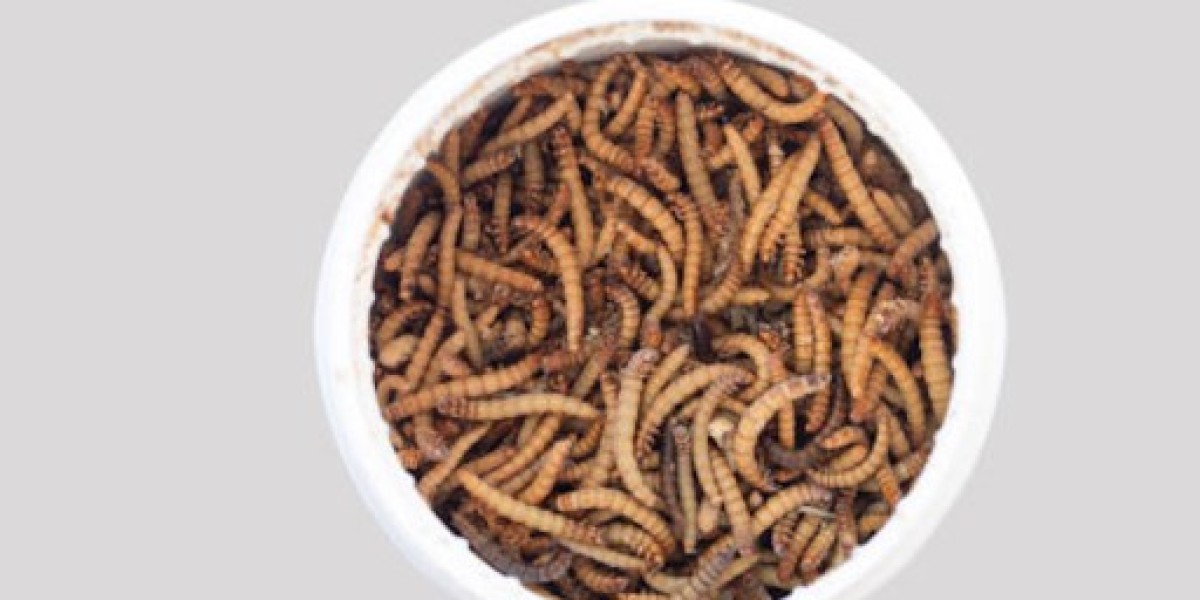Superworms are an excellent food source for pets like reptiles, birds, and amphibians, offering high levels of protein and fat essential for their growth and health.
However, storing superworms for long periods can be challenging. The problem arises when you buy in bulk or breed your own and are unsure about how to store them effectively. Issues include:
Limited shelf life of live superworms
Overcrowding in small spaces
The risk of spoilage if not stored correctly
So, do superworms need to be refrigerated? Here, we will dive into whether freezing superworms is a viable solution for long-term storage and provide tips on how to do it safely.
Why Superworms Are Popular
Superworms (Zophobas morio) are a favorite feeder insect for pet owners due to their rich nutritional profile. They are packed with protein, fats, and fiber, making them an excellent food source for pets such as bearded dragons, geckos, and chickens.
The high fat and protein content is especially beneficial for growing reptiles, but because they can be harder for some pets to digest, it's important to regulate how often they are fed. As a result, many pet owners choose to breed these worms at home, ensuring a consistent and fresh food source for their pets.
However, superworms have a relatively short lifespan in their larvae form, living around two to three months. If you buy superworms in bulk or breed your own, you'll need to figure out how to store them effectively so they remain fresh until you’re ready to feed them to your pet. One potential solution is freezing them, but the process can be a bit more complex than it seems.
The Freezing Process
When it comes to long-term storage, freezing superworms is an option some pet owners consider. Freezing can help extend their shelf life, making it easier to manage large quantities without worrying about waste. However, there are several factors to consider when deciding whether or not freezing is suitable for your superworms.
Freezing Superworms: Pros and Cons
Pros of Freezing Superworms
Long-Term Storage: Freezing allows you to store superworms for extended periods without worrying about their lifespan. This is especially useful if you’ve bought in bulk or have bred a large number of superworms.
Convenience: Having a frozen supply of superworms means you can store them and thaw them as needed, which can save you time and reduce trips to the pet store.
Prevent Overpopulation: If you’re breeding superworms, freezing them can prevent overcrowding in your habitat, reducing the need to constantly manage the population.
Cons of Freezing Superworms
Loss of Nutritional Value: Freezing may cause a slight reduction in the nutritional content of superworms. The freezing process can affect the texture and moisture content, potentially lowering the fat and protein levels, which could impact their effectiveness as a feeder insect.
Potential Death: Freezing superworms can be stressful to them and, if not done correctly, could result in them dying during the freezing process. It’s important to ensure they are properly conditioned before freezing.
Thawing Issues: Once thawed, the superworms can become soft or mushy, making them less appealing to your pets. Some animals may not readily accept thawed superworms, especially if the texture has been altered.
How to Freeze Superworms Properly
If you decide that freezing superworms is the best option for long-term storage, here’s how to do it safely and effectively:
Prepare the Superworms: Before freezing, it’s important to ensure the superworms are healthy and fed properly. Ensure they are well-fed, as gut-loading can provide your pets with a higher nutritional value when they eat the worms later.
Place Superworms in a Container: Choose a sturdy, airtight container or plastic bag. It’s important to remove excess air to avoid freezer burn. Avoid overstuffing the container, as allowing air to circulate can help prevent clumping and help the worms freeze more evenly.
Freezing Process: Place the container in your freezer and allow the superworms to freeze for several hours. You can leave them in the freezer for a few months, but be sure to check them every so often to ensure the freezer is at a consistent temperature.
Thawing the Superworms: When you're ready to feed the worms to your pet, simply remove them from the freezer and allow them to thaw in a cool place. Avoid microwaving them or using direct heat to speed up the thawing process, as this can harm the worms. Gradually bringing them back to room temperature is the best approach.
Alternatives to Freezing Superworms
If you're concerned about the potential downsides of freezing, there are other methods to store superworms that may better suit your needs:
Refrigeration: Some pet owners choose to refrigerate their superworms instead of freezing them. This can help slow down their metabolism and reduce activity without freezing them solid. Be sure to use a breathable container and provide a layer of moist substrate to prevent desiccation.
Gut-Loading and Short-Term Storage: If you’re only storing superworms for a short period, gut-loading them with nutritious food and keeping them at room temperature is a viable option. This allows them to stay active and healthy without the need for freezing.
Regular Breeding: Another option is to breed superworms in smaller batches, allowing you to regularly replenish your supply without needing long-term storage solutions. This can keep your colony healthy and ensure a consistent food supply for your pets.
Conclusion
Freezing superworms can be an effective method for long-term storage, but it's not without its drawbacks. While it can help preserve large quantities of superworms, the freezing process can affect their texture, nutritional content, and appeal to pets. If you choose to freeze your superworms, make sure to follow proper procedures for freezing and thawing them to minimize the impact on their quality. For those who prefer a less invasive method, refrigeration or regular breeding can offer alternative ways to maintain a steady supply of superworms. Ultimately, the best storage method depends on your pet's dietary needs and your available space for managing your superworm colony.







